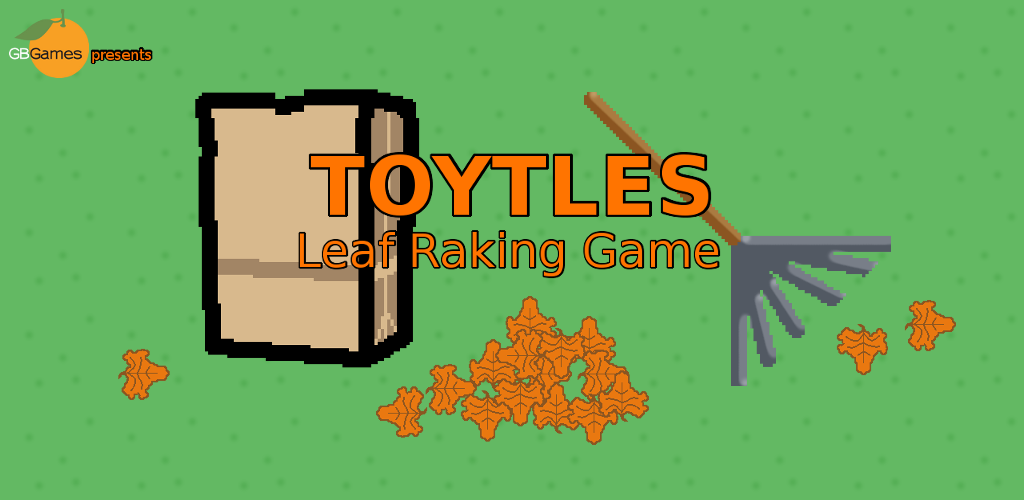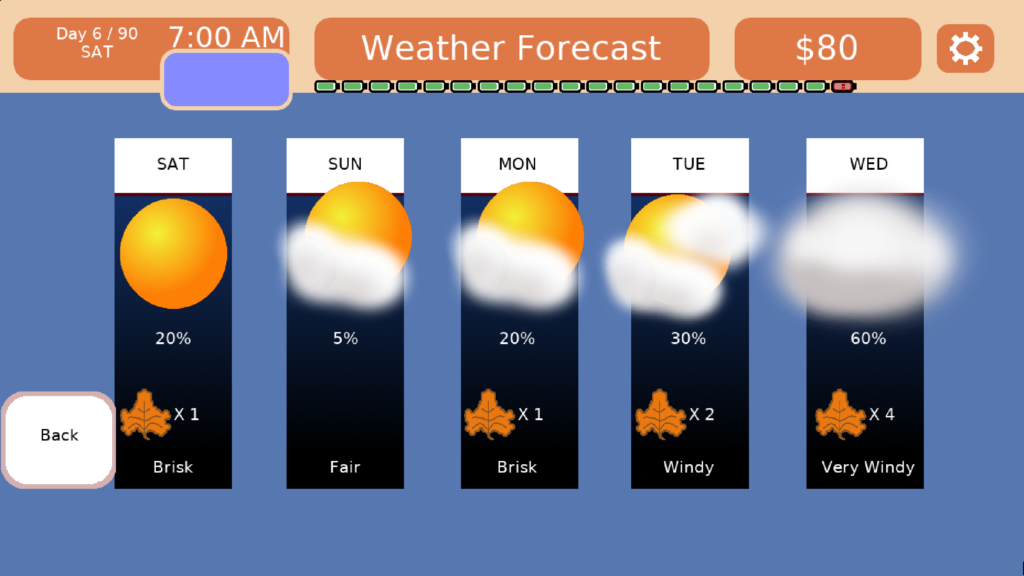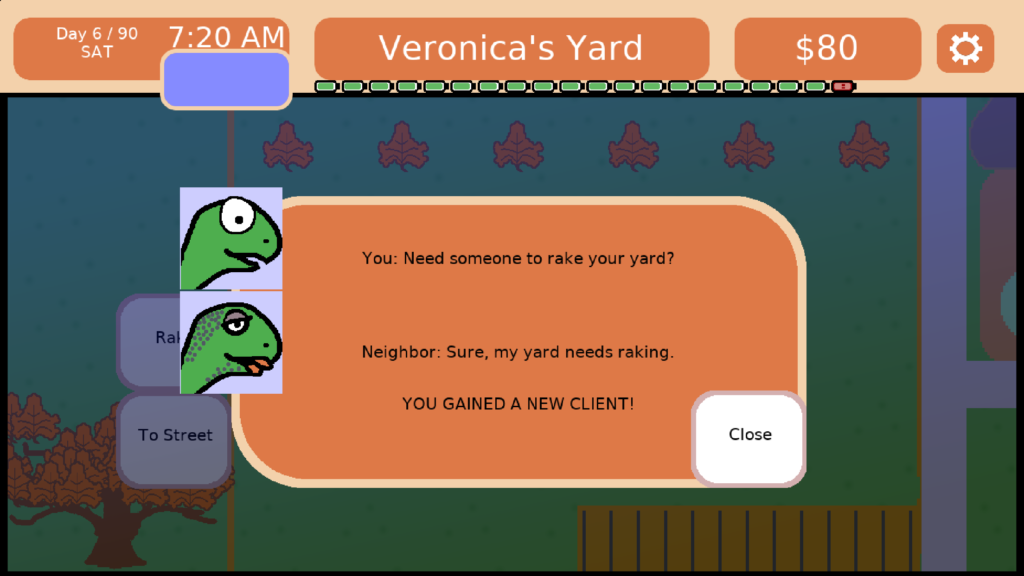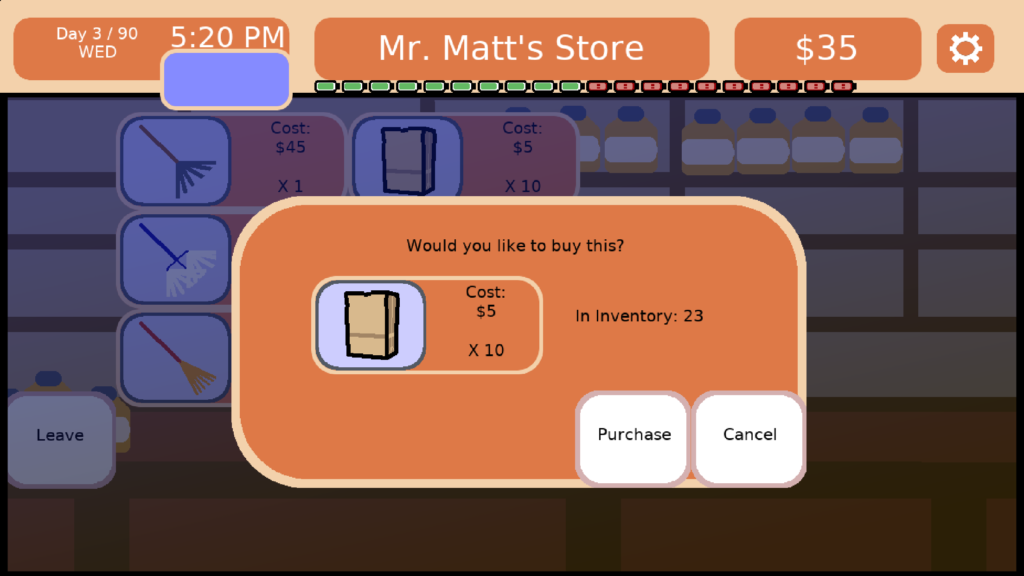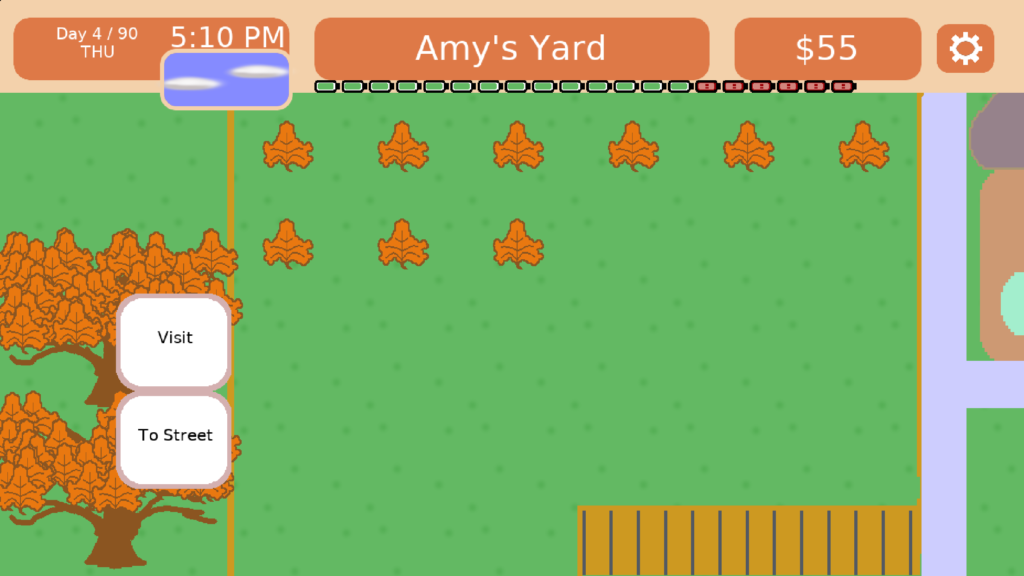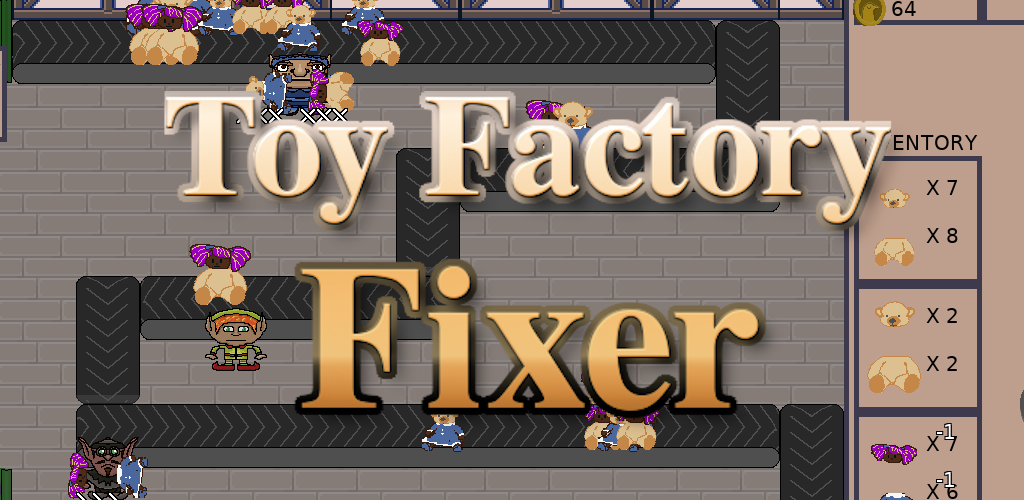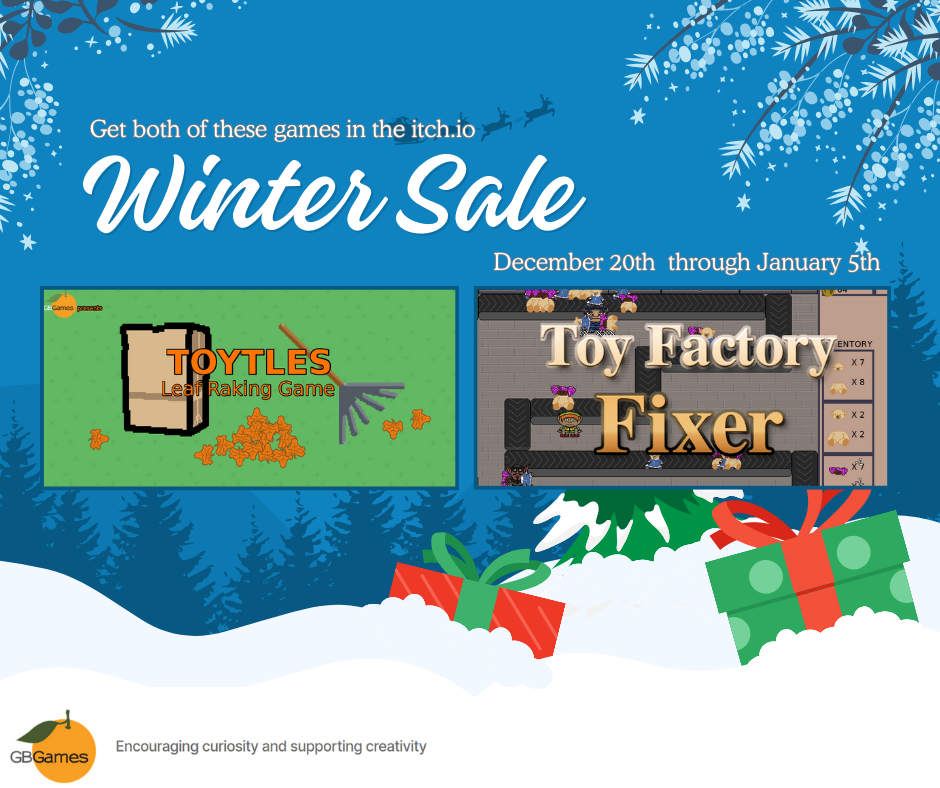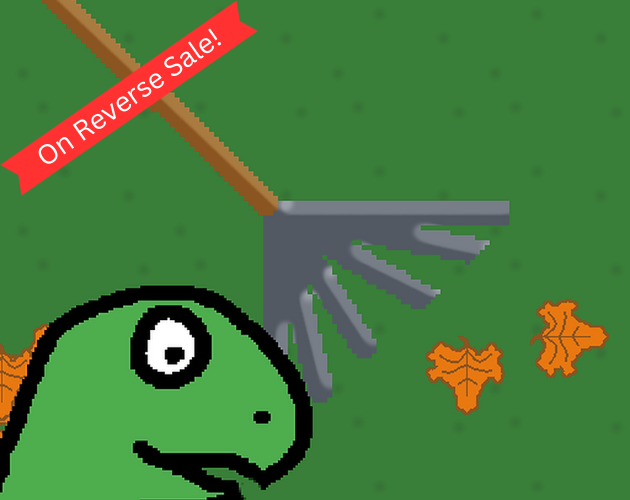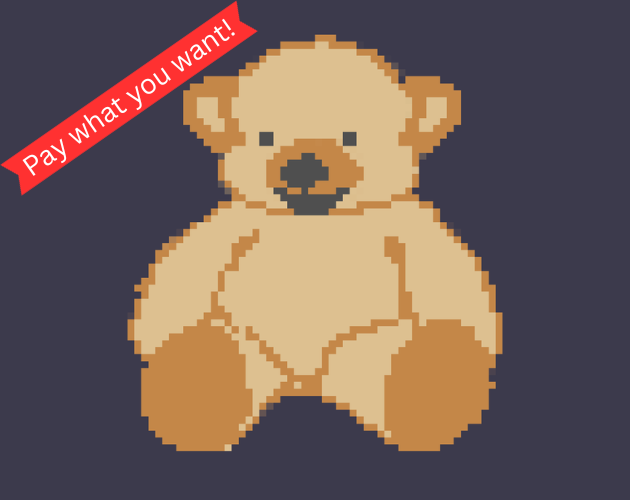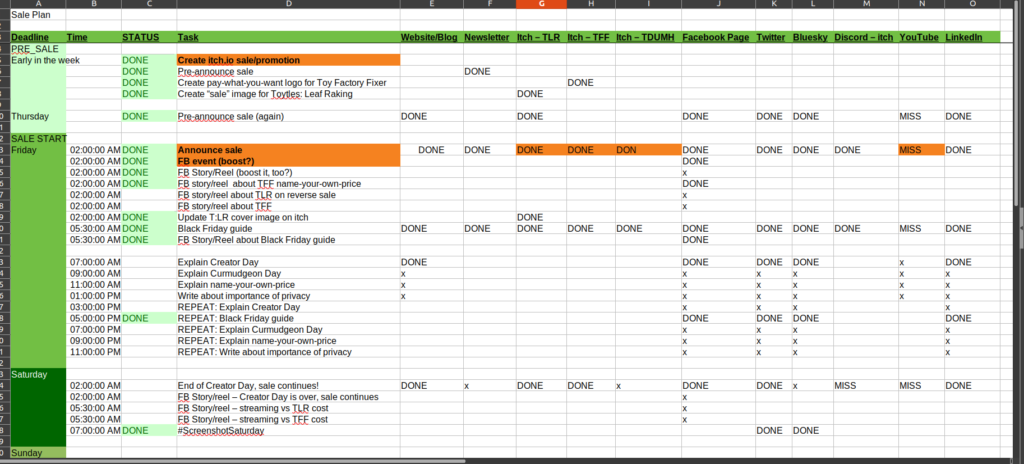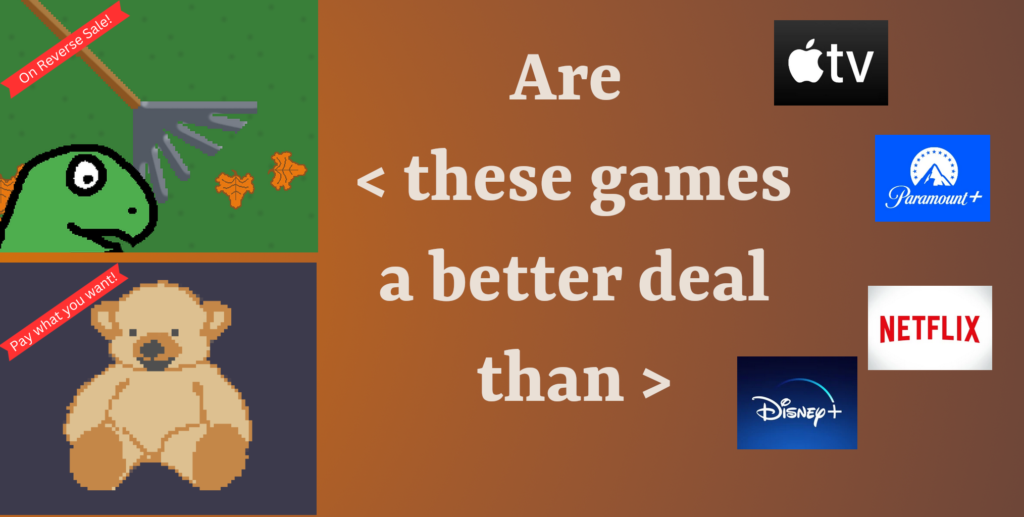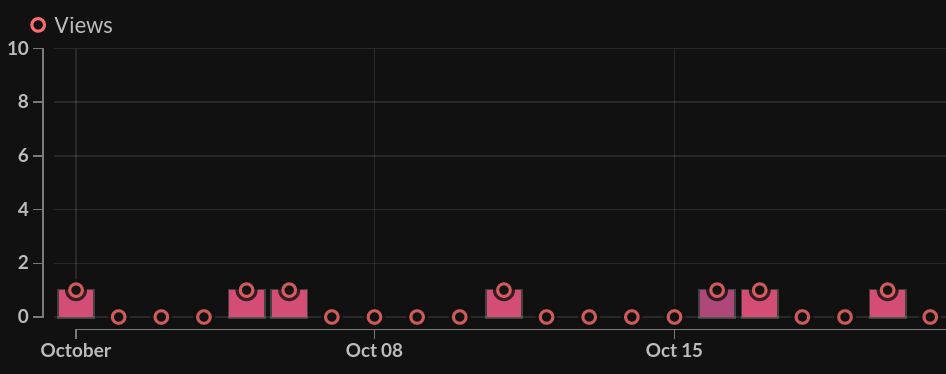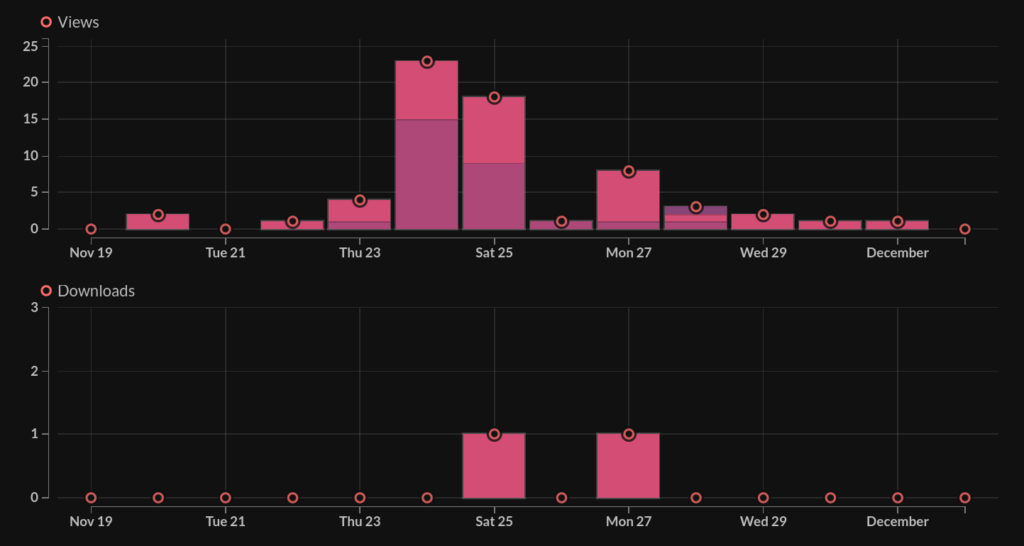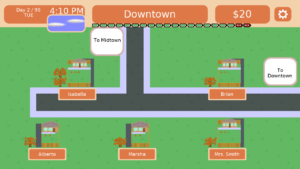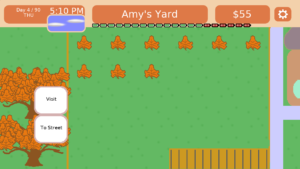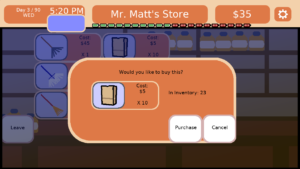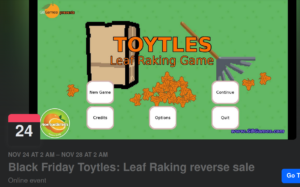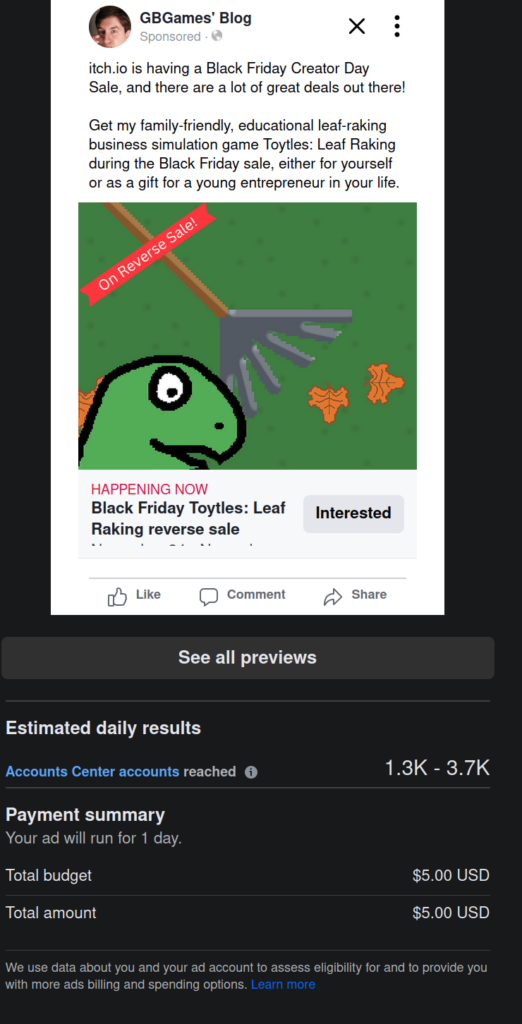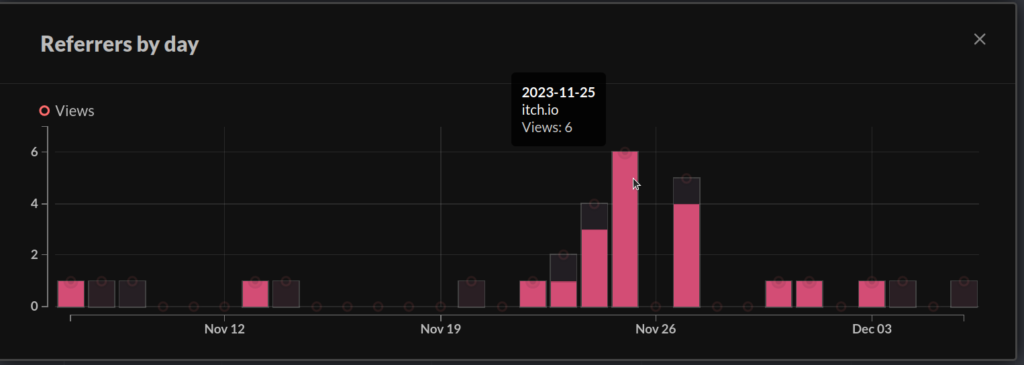It is time for my annual review of the previous year and preview of the coming year!
How did 2023 go for me?
Well, it was a mixed bag, but I am very excited about my successes.
Last year, I wrote in “Reviewing an Underwhelming 2022, Previewing a Better 2023”:
I normally would right-size my goals based on the previous year’s results, but I think last year was an off-year for me. I think those goals are still doable despite the fact that I didn’t get them done.
So, I’m keeping them as my goals for 2023:
- Release at least 2 Freshly Squeezed Entertainment games by December 31st
- Increase my newsletter audience from 25 to at least 37 subscribers by December 31st
- Earn at least 1 sale per month by December 31st
That’s at least one new subscriber and at least one new sale each month, and I’ll need to focus on shipping as quickly as possible to get two games out.
To hit my goals, I had two priorities: game creation/development and game promotion/awareness building.
Published Freshly Squeezed Entertainment Games (Target: 2) — 0
Despite putting in significantly more game development hours than I have ever tracked before (averaging over 7 hours a week, which still isn’t much in the grand scheme of things), I released 0 new games.
That’s two years in a row in which I did not publish a new game.
Much of my current business strategy depends on releasing games in my Freshly Squeezed Entertainment line, which are polished, playable prototypes that provide complete entertainment experiences and are given away for free. The general idea is that the games are supposed to be quick to develop and have a low barrier to entry so that they are more likely to find an audience. I hope to get feedback from that audience, and if enough interest exists, I can always create a “deluxe” version of the game that I can sell.
So not releasing a game isn’t great, because there cannot be an audience for a game that doesn’t exist.
My current project, The Dungeon Under My House, is perhaps too ambitious for my goals. Or maybe the scope of it is. For example, I spent a significant amount of time developing a way to customize the main characters in the game, and perhaps if I had my producer hat or my product development hat on, I could have decided that such work was a nice-to-have that could go into a potential deluxe version of the game so I could focus on the core of the project.
I am going to continue working on it because I like the concept (a non-violent 1st-person dungeon crawler focused on conversation and relationships) and I want to see it through, but I am really going to need to identify exactly what I want in the game and be strict about recognizing nice-to-haves vs enhancements that help make the game playable.
GBGames Curiosities Newsletter subscribers net increase (Target: 12) — net 5 (+8, -3)
My goal was to increase my GBGames Curiosities Newsletter subscribers to a total of at least 37, up by 12 from the previous year. In last year’s review, I lamented that I only increased the number by 3, which was only half as much as I gained the previous year and a far cry from 12.
My newsletter (have you subscribed and gotten your free player’s guides yet?) is the core of my business strategy. As such, it is very important that I grow my audience of people who are interested enough to hear from me that they give me permission to reach out to them.
I started the year with only 25 subscribers, and I ended the year at 30.
I gained 8 subscribers, which is more than I have gained in any one year since I rebooted the newsletter in 2020, so that’s good.
But for the first time since then, I had 3 people either unsubscribe or otherwise get removed from my newsletter.
So, this goal’s metrics had a positive trend, but I didn’t hit my goal and while I expect that over time people might unsubscribe or drop from my newsletter subscribers, I hope it doesn’t become a trend itself.
Sales (Target: 12) — 13
Ok, I am seriously excited about this one!
In the past, I’ve set sales goals such as “$10,000 in sales” or “$10/month in sales” or “1 sale per week” but I’ve always fallen short. They never really motivated me to take the drastic action needed to make them happen.
In 2022, I set a goal to sell at least one game per month, which I considered both a doable yet challenging goal. I figured that if I could hit this goal, I could build upon it, and maybe I should try to hit this seemingly small goal before worrying about making enough in sales to get anywhere near full-time indie status.
But 2022 was kind of a bust, and I had only 4 sales, which I guess was good despite my lack of promotion efforts.
In 2023, I took advantage of itch.io’s various sales and Creator Days throughout the year. Things seemed promising early on when I sold 4 copies of Toytles: Leaf Raking in March through itch.io’s Creator Day sale. I had done a little promotion on social media, and it seemed to be working out well! Add to those sales the two mobile sales I got, and the first quarter of the year was telling me that I was going to make my sales target early!
And then months went by with no sales, until itch.io had a Summer Sale followed by a Creator Day sale in August. I sold one copy of my game in each sale, plus someone donated money to get my free game Toy Factory Fixer. Mathematically, I was still on track for 1 sale per month, but it was disappointing that sales had slowed down.
My biggest disappointment was the combination of the Halloween Sale and the Black Friday Creator Day sale. Despite the time and effort I put into promoting my games then, including the creation of videos, I sold no copies of my game at all.
Luckily, for some reason, I sold three copies of Toytles: Leaf Raking for mobile between November and December, bringing my total to 13 sales for the year.
So on the bright side, I not only hit my target but exceeded it!
But I wish I knew why suddenly people decided to buy my game at the end of the year. Half of my sales came from itch.io, and as that’s where my promotion efforts were aimed at, it is clear that those sales came from my efforts.
But I don’t have any way to determine how customers found the game on the other app stores, and I would much rather have a good idea for how to reproduce these results.
Analysis
I had more sales in 2023 than I had in any of the previous 11 years. In 2011 I had sold 23 copies of my first commercial game Stop That Hero! totaling $91.25 in take-home money, which includes pre-orders as well as actual sales, but ever since, I’ve had very inconsistent and much lower sales numbers.
In 2023 I earned earned $103.91 from my 13 sales. That’s what I get after the various stores take their cut (which is why Creator Day sales are so nice, as itch.io allows me to keep all proceeds from sales on those days). That’s more than I’ve earned in the past six years combined and more than I have ever earned in sales from a single year.
So, relatively speaking, 2023 was a great sales year for GBGames! I mean, I know this is barely pizza money, and I’m not quitting my day job yet, but I set a new baseline for myself and my business!
How did I do so much better than previous years? I spent more time on promotion than before.
I think a big part of my early success was taking advantage of my Facebook page for GBGames. While I always shared my blog posts on that page, I otherwise didn’t do much with it.
At the beginning of the year, I decided to post daily on it. Monday through Friday, I would make sure I had at least one post on my Facebook page. While I still had my blog post link on Mondays, I also started sharing images of my past games, with links to their pages. I also would ask people to sign up for my newsletter weekly.
I didn’t expect miracles, but I thought things would grow, if slowly. I quickly got frustrated with Facebook’s algorithms because I was in a catch-22 of Facebook not showing my posts to people because people weren’t seeing my posts.
They’ll gladly take my money to help promote it, though, or at least the promise of doing so. I paid to promote my Black Friday sale event and got way, way fewer than the estimated number of people reached, so that wasn’t great, but on top of it Facebook said that they’ll show it to more people for real this time if I spend more.
Anyway, I suspect the reason why my sales figures dropped after the initial few months was because I tapped out my friends and family, the only people who Facebook was showing my posts to.
I also have Twitter and LinkedIn accounts, but my company’s Facebook page seemed the most likely social media account I had that could target actual potential customers rather than other game developers.
Recently I had asked a colleague of mine, someone who has had great success with his game sales going back almost 30 years, how he does promotion these days. He used to do a lot of search engine optimization, but in his response he said that “Search engines don’t seem to be the main driver of traffic anymore. Everyone is on social media” and so that is a bit disappointing.
Partly because the dynamics of social media mean that instead of having something out on the web that others can find on their own time, as Cory Doctorow said in The (open) web is good, actually, “The social media bias towards a river of content that can’t be easily reversed is one in which the only ideas that get to spread are those the algorithm boosts.”
Basically, the more I rely on social media to promote my game, the more effort and/or money I need to expend for at best a temporary boost in potential traffic.
If I think of my options for promotion as part of my megaphone, I have my website, blog, newsletter, and various social media accounts, including a YouTube channel that I started using earnestly at the end of the year. None of these have a large number of followers or subscribers. My megaphone is tiny.
Which means that even when I do expend a lot of effort, my megaphone only reaches a small number of people.
As I mentioned in my 2023 Black Friday Creator Day post mortem, even though I had put in more effort than ever before, and even though the metrics showed that the result was more views of my games than ever before, it still amounted to a total of only 50 views. And none of those views turned into a sale.
I go into more in that post mortem, but my overall promotion strategy has been to leverage my own megaphone as much as possible, and to supplement things, sometimes pay small amounts to unreliably leverage the much larger megaphone of a company such as Facebook or Google.
Clearly, this strategy has its limits, or at least my available megaphone has its limits at the moment.
Some numbers
I did a total of 397 hours of game development for the year, a new record for me since I started tracking my hours in 2013 (I was a full-time indie who didn’t track my game development time between 2010 and 2012). My previous record was 299 hours in 2021.
For someone working full-time, that amounts to less than 2.5 months, assuming a 40-hour work week. So it is not a lot of time, but it’s an improvement over not even doing 2 months of full-time game development in a year. You can see why I refer to myself as a very, very part-time indie game developer.
I wrote for a total of 75 hours, which resulted in 76 blog posts published and 18 newsletter emails sent.
My weekly development blog post got paired with a second blog post sharing my new video companion devlog. I published 13 Freshly Squeezed Progress Report videos in the final three months of the year.
I try to send out a monthly newsletter, but in my last few sales I sent out multiple newsletters for the beginning, duration, and end of a sale, which accounts for the relatively large number.
As for my budget, I mentioned my earnings from sales earlier. I also earned some money from a short contract job. While I haven’t been paid for all of my sales yet, I can say that I’ve taken home over $570. Again, not quite pizza money.
I spent slightly more than the previous year, but I still kept my expenses down by resisting games, books, and other purchases. My major expense categories were web hosting (a three year plan), educational subscriptions (Pluralsight and a book club membership), and the Apple App Developer Program annual fee, something that auto-renewed on me when I was still contemplating whether or not to drop it since I wasn’t earning enough to justify the expense. All told, I spent over $2,000.
Eventually I would like to report that I’ve made more than I’ve spent, but this isn’t the year.
I pulled back on some personal goals. I used to try to do a doodle a day and do 15 minutes of focused learning a day, mainly to take advantage of my Pluralsight subscription. But I found it was stressful trying to fit everything in, so I ended up dropping a lot of them. I fantasize about getting back to full-time indie status and being able to spend more of my time on these kinds of things.
In 2022 I had hurt myself badly enough to stop doing my regular exercises. After some physical therapy, I was back to exercising regularly in the morning, but partway through 2023 I had to stop again due to leg and back pain.
Around July, I started regularly doing push-ups again, but I ended the year weighing the most I’ve ever weighed.
I read a total of 64 books. Well, some were audiobooks, and 11 were trade paperback comic books. My favorites for the year were:
- How to Write One Song by Jeff Tweed
- Perennial Seller by Ryan Holiday
- This Is How They Tell Me the World Ends by Nicole Perlroth
- A Memory Called Empire by Arkady Martine
- We Were Dreamers by Simu Liu
- The Long Way to a Small, Angry Planet by Becky Chambers
- The Lies of the Ajungo by Moses Ose Utomi
- Good Arguments by Bo Seo
- Sandy Hook by Elizabeth Williamson
- Magical Mathematics by Persi Diaconis and Ron Graham
- The Name of the Rose and The Role of the Reader by Umberto Eco
- The Making of Another Major Motion Picture Masterpiece by Tom Hanks
- Time Travel by James Gleick
- Collaborative Worldbuilding for Video Games by Kaitlin Tremblay
- Y: The Last Man (the entire series)
- and Sweat the Technique by Rakim
I still haven’t figured out a regular game-playing schedule for myself. As I’ve said before, since I give myself so little time to work on game development, if I find myself with time to play a game, more often than not I treat it as time to develop.
Steam shows I only played 4 games: Homeworld: Remastered, Etrian Odyssey HD, Nowhere Prophet, and Skatebird. I also played a Etrian Odyssey II on my Nintendo DS, plus Signs of the Sojourner, Oxenfree, Battletech, AI War Collection, Pontifex, and Baba Is You.
The last two I played a lot while I was recovering from COVID.
Oh, yeah, I tested positive right before my holiday break and was out of commission for a couple of weeks. I caught up on a lot of TV and played some games, but mostly I slept. It was a forced break that prevented me from finishing the year strong.
Overall, last year I focused on game development and game promotion, and in both cases I can see room for improvement. My game development focus needs to drive towards shipping sooner rather than having a continuously open ended development. My game promotion revealed to me the need for some more baseline analytics data so I know how to make better decisions and can see whether or not my efforts are effective.
Goals for 2024
For years I was setting goals that I thought were right-sized and could be a jumping off point for bigger and better goals.
But I kept failing to hit them.
So I find myself in a new position when it comes to my sales goals. I hit my target, and now I can improve! Normally, I would take my 1 sale per month goal and double it. Can I sell at least 2 games per month in 2024?
And since I haven’t increased my subscriber count by 12 in a single year, I would just keep that goal until I manage to accomplish it.
But as my colleague Tim Beaudet likes to point out, “goals should be things you can control.” And I can’t control sales or subscriber numbers.
Those are lagging metrics. They are the results that might get influenced by my actions, but I can’t influence them directly.
And frankly, I think I struggled throughout the year with these as my goals. The only goal I could control was how many games I released, and even though I didn’t accomplish it, I knew that the thing I needed to do was make a game and publish it.
But whenever I saw my other goals, there was a vague sense of “Ok, so?” A lagging metric is one that I can look at and see what already happened, but it didn’t by itself indicate actions I should take, and I think seeing those goals always put me in a position of needing to figure out what those actions are.
So while I like to keep those lagging metrics as outcomes that I am aiming for, they can’t be my actual goals.
So for 2024, I have the following outcomes I am aiming for:
- Increase my newsletter audience from 30 to at least 42 subscribers by December 31st
- Earn at least 2 sales per month by December 31st
As for actionable goals:
- Release at least 2 Freshly Squeezed Entertainment games by December 31st
- Perform at least 2 SEO activities per month by December 31st
Ok, so make and release games is a pretty straightforward goal. I just need to focus on the shipping part.
But SEO activities? The benefits of search engine optimization would be more traffic to my site, which means more potential customers turning into actual customers and/or subscribing to my newsletter.
What’s risky is that the major search engines are, well, becoming worse for people. They seemed to be doubling down on AI and making the search experience kind of awful. Google used to let me see results for multiple pages, but now it seems very interested in showing me videos after the first few results, and if I don’t want videos, there doesn’t seem to be a way to avoid it. Plus, lots of websites are now dominating the search listings with poorly generated content, which makes it hard to find good stuff.
And as my colleague above said, most people are on social media these days, so what’s the point of SEO?
Well, I can always stand to make my website better, more effective, and easier for people to find what they want. I can do keyword research, ensure my pages are optimized, and keep my site speedy and responsive.
More importantly, I can control my website, while I can’t control how Facebook or YouTube algorithms impact whether or not people even see my content even when they like or subscribe to do so.
I plan to continue my weekly devlog and companion videos, my daily social media posts, and more, but I didn’t think they made sense as annual goals. They are already something I’m doing, so “keep it up” seems the default. Plus, maybe I’ll find that some of these activities need to be changed or tweaked as I find out they are more or less effective or a good use of my time.
2 SEO activities a month might seem low. If I think of my SEO work as experiments, I think one experiment a week would give me plenty of time to see if a particular change made a difference, and if I spend money to get more traffic, I can see the impacts much more quickly.
But I am trying to keep in mind that I am not working on this full-time yet nor am I made of money, so giving myself a couple of weeks to make each dent seems reasonable, and if I find myself able to do so more quickly and easily, I can always do more.
As for personal goals, I liked the ones I had for last year: make my physical health a bigger priority, invest time and money into learning, and give myself time to play.
For all three, I need to be deliberate and make some habits. I already track my exercise and my reading habits, but perhaps 2024 is the year I start tracking which games I play.
Well, happy new year! I hope 2024 is full of creativity and that you allow yourself to follow your curiosity wherever it leads you!

